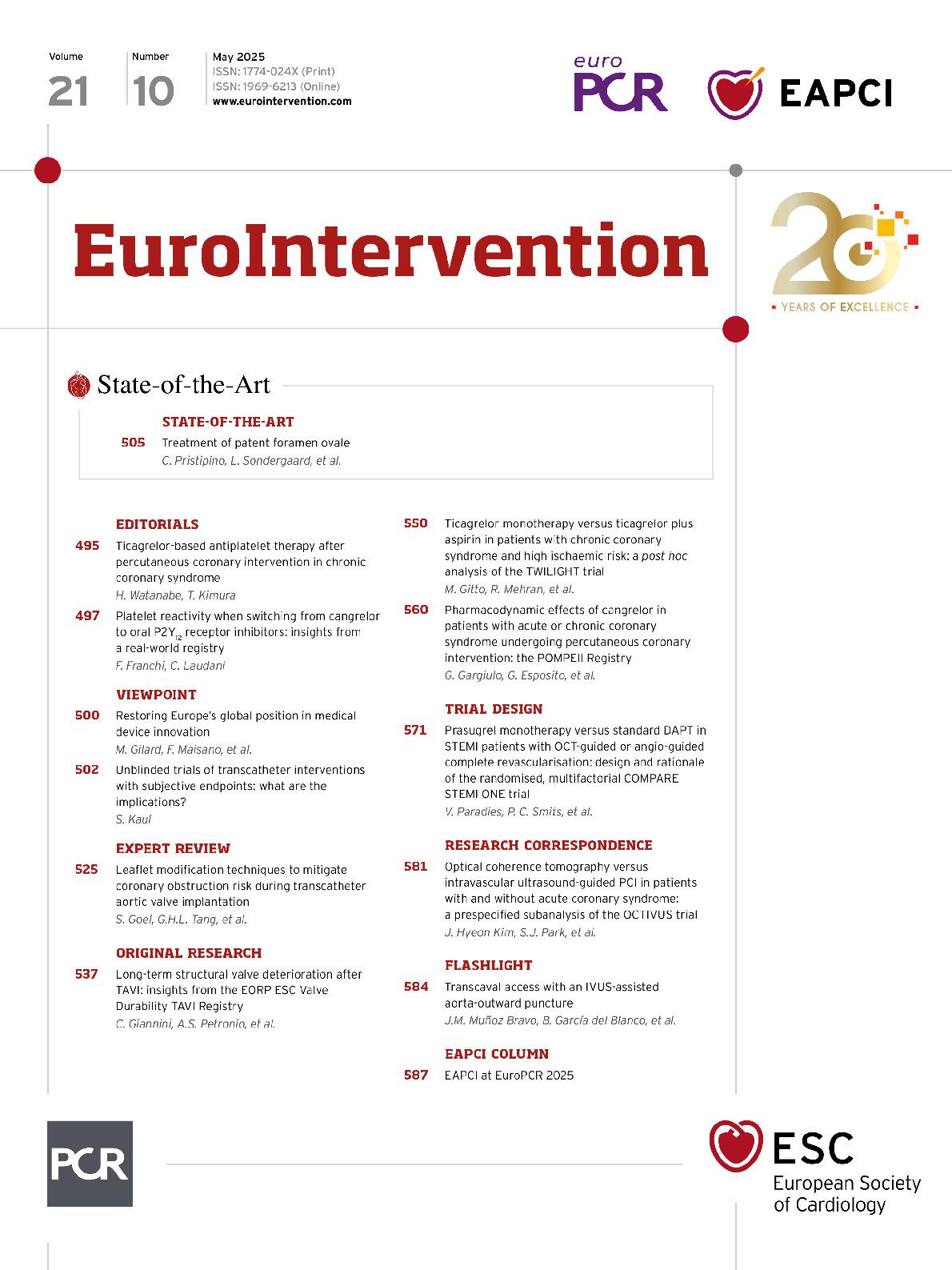Abstract
Background: Valve durability is a key consideration as the patient population eligible for transcatheter aortic valve implantation (TAVI) expands to include lower-risk and younger individuals who are expected to live many years after the procedure.
Aims: This registry aimed to assess the incidence of long-term structural valve deterioration (SVD) beyond 5 years post-TAVI.
Methods: Consecutive living patients who underwent TAVI up until 2014 using any commercially available transcatheter heart valve (THV) at 22 participant centres were enrolled in the European Valve Durability TAVI Registry. All patients underwent comprehensive echocardiographic assessments (61% were evaluated independently by a central core laboratory) within 6 months of enrolment and at least 5 years post-TAVI; SVD was defined according to Valve Academic Research Consortium 3 definitions.
Results: A total of 597 patients (aged 79.6±7.1 years at the time of TAVI; 47.2% male, mean Society of Thoracic Surgeons score 5.0%) were included. At a median of 6.1 years of follow-up (interquartile range 5.2-7.3 years), the crude incidence of moderate/severe SVD was 9.5% (n=57; moderate: 6.2%, n=37; severe: 3.4%, n=20). Predictors of SVD identified by Cox regression analysis were use of an intra-annular THV (hazard ratio [HR] 38.44, 95% confidence interval [CI]: 10.8-136.3; p<0.001), a small THV size (HR 4.82, 95% CI: 2.42-9.60; p<0.001) and moderate/severe postprocedural paravalvular leak (HR 3.64, 95% CI: 1.59-8.32; p=0.002).
Conclusions: The incidence of moderate/severe SVD during long-term follow-up after TAVI is low, with severe SVD being even rarer than moderate SVD. SVD occurs more frequently in patients treated with older-generation intra-annular valves and in those with small-sized THVs.
Sign up for free!
Join us for free and access thousands of articles from EuroIntervention, as well as presentations, videos, cases from PCRonline.com

